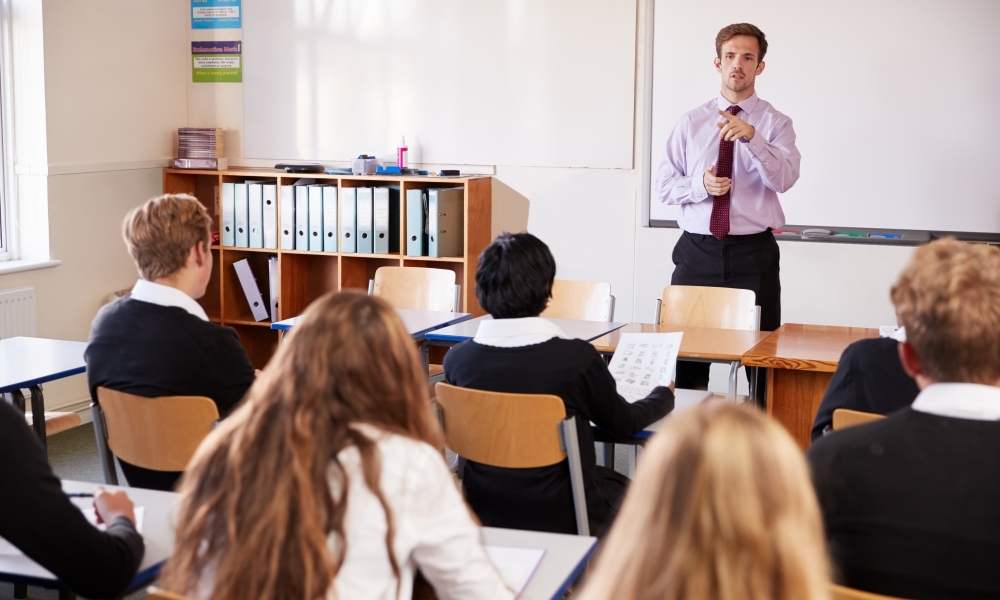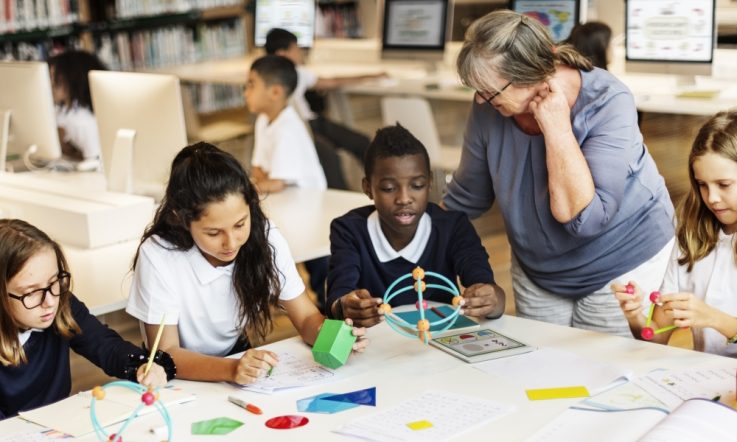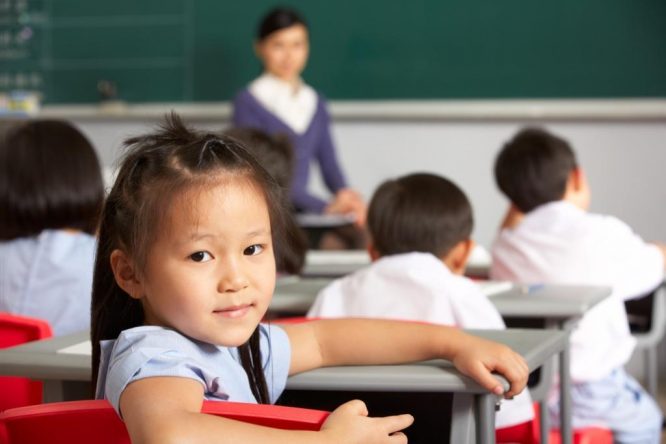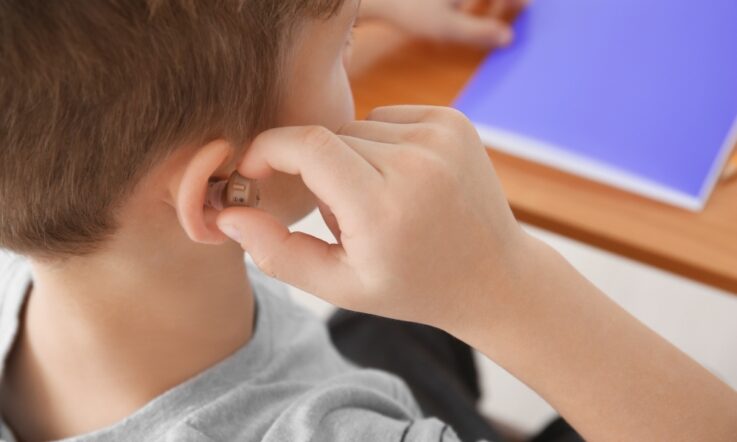The profile of a gifted student does not typically include disabilities. The ability of a child to be both learning disabled and gifted is a paradigm which confuses many educators, parents and students. To many, these are mutually exclusive categories and to possess both is either a mistake or unbelievable. In today’s article, Learning Specialist Angela Myler says an understanding of the complexities of twice-exceptional students is paramount to be able to cater to their diverse learning needs, so that both disability and gifts are given the attention they deserve. Here, she reflects on her time in the US school system and discusses the topic from a US perspective.
As I sat with a student’s mother listening to her talk excitedly about her 10-year-old son, Gavin*, his passion for creating butterflies from Post-it notes, and how he had created a virtual world for the environment, including a language, political system and ecosystem, I reflected on her tears from earlier in our conversation. How her son’s attention deficit hyperactivity disorder (ADHD) is impacting his life – he is consistently late to school each day as he can’t get to sleep, he can’t manage his homework, let alone get out of the house in the morning.
Despite using all the tools available to her like calendars, reminders, alarms, she struggled to manage Gavin through his day, and yet he was able to focus for hours on end on his butterflies. It struck me how incredibly fortunate we are to have children like Gavin in our lives to show us what twice-exceptionality can look like.
During our meeting I watched the faces of the Vice Principal and Counsellor, as they listened in awe to the unknown capabilities of Gavin. Twice-exceptional kids are like icebergs – there is so much more going on underneath than appears on the surface. As a Special Education teacher, I know that the ‘Gavins’ in the world are more common than most people realise. He represents 95% of my caseload of students who require additional support. His needs are complex and intense and require an approach which is deeply personal.
‘2e’ students, as they are colloquially known, are capable of the most amazing and creative expressions, while at the same time frustratingly can’t accomplish the most simple of tasks. Writing a cohesive paragraph is beyond them but creating an entire language system for a butterfly community is not.
As a teacher it is difficult to reconcile these contradictions. As with some of the great twice-exceptional individuals in our world - Albert Einstein, Bill Gates and Vincent Van Gogh - I wonder what Gavin will achieve in his lifetime.
What is twice-exceptional?
Twice-exceptional learners have been defined as possessing the capacity for high achievement, in addition to having a disability (Joint Commission on Twice-Exceptional Students, 2009). The term is commonly used to describe students who are both gifted in one or more domains (Mathematics, Science, Technology, Social Art, Visual, Spatial, Performing Arts) and have a disability which may be cognitive, physical, and/or emotional (Assouline et al., 2010; Nicpon, et al., 2011; Missett, 2017).
Disabilities include health impairments such as ADHD, autism spectrum disorders (ASD), physical disabilities, emotional/behavioural disorders and speech and language disorders (Reis et al., 2014).
Whilst acknowledging it is difficult to state the exact number of twice-exceptional students, it is estimated that there are approximately 20,000 such students in US schools (Nicpon et al., 2011). The reason why there is no accurate data is threefold: firstly, there is no formal system for identification; secondly, giftedness may be identified, but a disability may be hidden; and thirdly, a disability may be identified but gifts are not apparent (Nicpon et al., 2011).
Whilst the concept of giftedness is understood and acknowledged by both society as a whole and the educational professional community, twice-exceptionality has not been afforded the same consistent acceptance and recognition. The contradiction of possessing both high abilities and disabilities is misunderstood and subsequently mistreated, and the result is an ongoing frustration for students and supporters of twice-exceptionality (Baum et al., 2017). It has been found that only 1% of twice-exceptional students in the US have access to gifted and talented programs (Lee & Ritchotte, 2018). The neglect of the needs of these students means their gifts and talents are failing to be nurtured and this lack of opportunity is a crisis which needs to be addressed.
Despite the plethora of research into twice-exceptionality, there is a lack of consensus amongst educators of the characteristics and needs of these students (Reis et al., 2014). As a result, teachers, students and parents are frustrated and often misdiagnose twice-exceptional students with disabilities, while failing to acknowledge their cognitive strengths and talents (Assouline et al., 2010).
The impact of teachers
The most important asset to twice-exceptional students are teachers: teacher attitudes can significantly influence the outcomes for twice-exceptional students (Chivers, 2012). Teachers who advocate on behalf of these students are the key to unlocking their unlimited potential and ensuring that the iceberg underneath the water can be developed and appreciated.
The effect of negative teacher attitudes and non-identification of giftedness and/or disabilities, is often a student who is frustrated, disengaged, with low self-esteem who has ‘checked-out’ of learning (Ronksley-Pavia & Townend, 2017). Underachievement in twice-exceptional students is common and can be a consequence of a focus on the students' disabilities, rather than their gifts (Reis & McCoach, 2002).
These students are particularly at risk of low self-esteem, poor self-concept and low motivation due to their asynchronous abilities, and any plan to address their needs, must include consideration of their social-emotional functioning (Assouline et al., 2010; Reis et al., 2014).
Equitable access to schooling includes recognising and providing for the learning needs of those who are gifted and talented, and who also possess a disability. Acknowledging the existence of these students is the first step in meeting these obligations. Understanding their characteristics, their diversity, their strengths, interests and challenges is paramount in order to differentiate pedagogy in the classroom (Henderson & Jarvis, 2016).
An individualised approach which takes into consideration the whole child is essential for ensuring positive outcomes for twice-exceptional students (Nicpon et al., 2011; Baum et al., 2014). Researchers (Baum et al, 2014) have identified 5 critical factors that are necessary for the growth and development of twice-exceptional students:
- A psychologically safe environment
- Develop positive learning communities
- Allow time for emotional check-ins with students
- Teacher, student and parent tolerance for asynchrony
- Differentiated instruction strategies for teachers
- Implement a social-emotional curriculum for students
- Provide parent information sessions
- Time
- Allow students time for growth
- Embed extra time in student learning plan
- Positive school relationships
- Create after-school clubs based on common interests
- Connect students with mentors
- Strengths-based, talent-focused approach
- Identify strengths and talents on students learning plan
- Allow for differentiated learning products and outcomes
- Provide a challenging curriculum.
Where these factors are provided for, students can use their gifts and talents to flourish, notwithstanding their disabilities.
Advocating with colleagues for differentiation in the classroom, with schools to provide for best practice, with the community to ensure appropriate services are available, with state and federal legislators to ensure funding is provided and with the general public to put a spotlight on these needs and capabilities of these amazing students is essential if we are to truly meet the needs of these exceptional students (Roberts & Siegle, 2012).
*Names have been changed.
References and related reading
Assouline, S. G., Nicpon, M. F., & Whiteman, C. (2010). Cognitive and psychosocial characteristics of gifted students with written language disability. Gifted Child Quarterly, 54(2), 102-115. doi.org/10.1177/0016986210396436
Australian Curriculum Assessment and Reporting Authority (ACARA). (2016). The Melbourne Declaration of Educational Goals for Young Australians (MCEETYA, 2008). Retrieved from http://www.curriculum.edu.au/verve/_resources/National_Declaration_on_the_Educational_Goals_for_Young_Australians.pdf
Australian Institute for Teaching and School Leadership (AITSL). (2014). Australian Professional Standards for Teachers. Retrieved from https://www.aitsl.edu.au/teach/standards
Baum, S. M., Schader, R. M., & Hébert, T. P. (2014). Through a different lens: Reflecting on a strengths-based, talent-focused approach for twice-exceptional learners. Gifted Child Quarterly, 58(4), 311-327. https://doi.org/10.1177/0016986214547632
Baum, S. M., Schader, R. M., & Owen, S. V. (2017). To be gifted and learning disabled: Strength-based strategies for helping twice-exceptional students with LD, ADHD, ASD, and more. Prufrock Press Inc, Waco, Texas.
Chivers, S. (2012). Twice-exceptionality in the classroom. Journal of Student Engagement: Education Matters, 2(1), 26-29.
Henderson, L., & Jarvis, J. (2016). The gifted dimension of the Australian Professional Standards for Teachers: Implications for professional learning. Australian Journal of Teacher Education, 41(8), 60-78. http://dx.doi.org/10.14221/ajte.2016v41n8.4
Lee, C-W., & Ritchotte, J. (2018). Seeing and supporting twice-exceptional learners. The Educational Forum, 82, 68-84. https://doi.org/10.1080/00131725.2018.1379580
Missett, T. C. (2018). Twice-Exceptional students: Gifted students with disabilities impacting learning. In Callahan, C. M., & Hertberg-Davis, H. (Eds.) (2d Ed.). Fundamentals of gifted education: Considering multiple perspectives (361-371). NY: Routledge.
Nicpon, M. F., Allmon, A., Sieck, B., & Stinson, R. D. (2011). Empirical investigation of twice-exceptionality: Where have we been and where are we going? Gifted Child Quarterly, 55(1), 3-17. https://doi.org/10.1177/0016986210382575
Reis, S. M., Baum, S. M., & Burke, E. (2014). An operational definition of twice-exceptional learners: Implications and applications. Gifted Child Quarterly, 58(3), 217-230. https://doi.org/10.1177/0016986214534976
Rimm, S. B., Siegle, D. B., & Davis, G. A. (2018). Education of the gifted and talented (7th edition). New York, NY: Pearson.
Roberts, J. L., & Siegle, D. (2012). Teachers as advocates: If not you - who? Gifted Child Today, 35(1), 58-61. https://doi.org/10.1177/1076217511427432
Ronksley-Pavia, M., & Townend, G. (2017). Listening and responding to twice exceptional students: Voices from within. TalentEd, 29, 32–57. https://search.informit.org/do...
Editor's note: This article was updated on November 27, 2023 to include additional references and clarify the fact that the author is discussing the topic from a US perspective. Figures previously attributed to Australia should have been attributed to the US. We apologise for the errors.
Angela Myler says it’s important to recognise and provide for the learning needs of those who are gifted and talented, and who also possess a disability. ‘Acknowledging the existence of these students is the first step in meeting these obligations,’ she says.
Think about the students in your classroom. Do you have twice-exceptional students you work with? How do you ensure that you’re meeting their needs? Do you need more support in this area?



